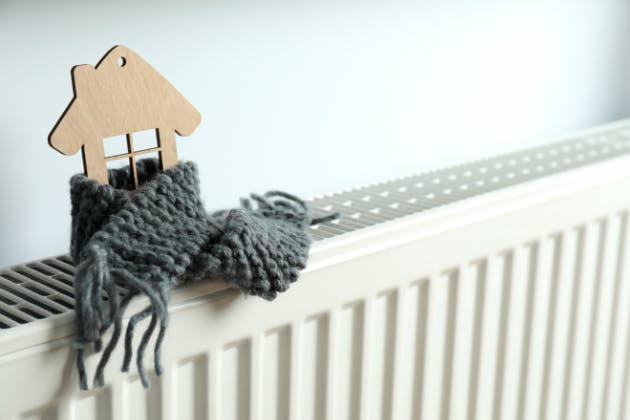When your radiator has cold spots, it's not just an inconvenience—it's a sign that your heating system isn't working at its best. This means higher energy bills and less comfortable rooms. Let's explore why cold spots occur and how to fix them.
Common Causes of Cold Spots
Trapped Air
Air can enter your heating system during maintenance or through small leaks. When trapped at the top of a radiator, it prevents hot water from circulating properly, causing cold spots. This is the most common cause of cold spots at the top of radiators.
Sludge and Debris Build-Up
Over time, rust, limescale, and other debris can accumulate in your radiators, forming a sludge that settles at the bottom. This build-up restricts water flow, leading to cold spots typically at the bottom or middle of the radiator. In severe cases, it can affect the entire radiator's performance.
Radiator Size and Placement Issues
An incorrectly sized radiator may not heat a room efficiently, leading to perceived cold spots. Similarly, poor placement, such as behind furniture or curtains, can impede heat distribution. Ensure your radiator is appropriately sized for the room and has clear space around it for optimal heat circulation.
Circulation Problems and Airlocks
Airlocks occur when air becomes trapped in the pipes, preventing hot water from circulating properly. This can cause entire radiators to remain cold or develop significant cold spots. Circulation problems can also arise from issues with the boiler or pump.
Stuck or Faulty Valves
Thermostatic radiator valves (TRVs) can become stuck or faulty over time. If a TRV is not functioning correctly, it may not allow hot water to enter the radiator, resulting in cold spots or an entirely cold radiator.

How to fix cold spots
Before You Start
Before attempting any fixes, check these important points:
First, ensure your heating is turned on and has been running for at least ten minutes. Feel your radiator carefully—note which areas are cold and which are warm. This information helps determine whether you're dealing with trapped air or a more serious issue like sludge build-up.
Next, verify that both radiator valves are open. The thermostatic valve on one end controls temperature, while the lockshield valve on the other end regulates water flow. Both need to be open for proper heating.
How to Bleed Your Radiator
Bleeding your radiator is often the quickest solution for cold spots. Here's the process:
Turn off your central heating and wait for the radiators to cool down. This step is crucial for safety and prevents hot water from spraying out during the bleeding process.
Locate the bleed valve—it's typically found at the top corner of your radiator. Place a cloth beneath it to catch any water and protect your flooring.
Insert your radiator key into the valve and turn it anticlockwise slowly, about a quarter turn. You should hear a hissing sound as the trapped air escapes. Once water begins to dribble out, close the valve by turning it clockwise. Don't over-tighten, as this might damage the valve.
Dealing with Sludge Build-up
If bleeding doesn't solve the problem, sludge might be the culprit. Sludge appears as black, muddy deposits in your heating system and requires more thorough treatment:
A power flush is often the most effective solution. This professional service uses high-pressure water to clear debris from your entire heating system. While more expensive than bleeding, it provides a thorough clean that can significantly improve your heating efficiency.
You might also consider adding a chemical cleaner to your system. These products help break down sludge over time, though they're generally less effective than power flushing.
Preventing Future Cold Spots
Prevention is always better than cure. Consider these long-term solutions:
Install a magnetic filter to catch metallic debris before it forms sludge. These devices are particularly effective when fitted during annual boiler services.
Maintain proper pressure in your heating system. Low pressure can lead to air becoming trapped, causing those frustrating cold spots to return.
Schedule regular system maintenance. Annual services help identify potential issues before they become serious problems.
When to Call a Professional
While many radiator issues can be resolved through DIY methods, some situations require professional attention:
If bleeding your radiators doesn't solve the problem, or if cold spots return quickly, you might need expert diagnosis. The same applies if you notice unusual noises from your heating system or if your boiler pressure keeps dropping.
Professional assistance is particularly important if you suspect sludge build-up, as power flushing requires specialist equipment and expertise.
Our Professional Heating Services
For residents in Burnley, Ramsbottom, Rossendale, and Rochdale, our heating engineers provide comprehensive radiator services. From basic maintenance to power flushing and system upgrades, we ensure your heating system operates at peak efficiency.
Simply call us on 07791 802791 and we'll be happy to help.


